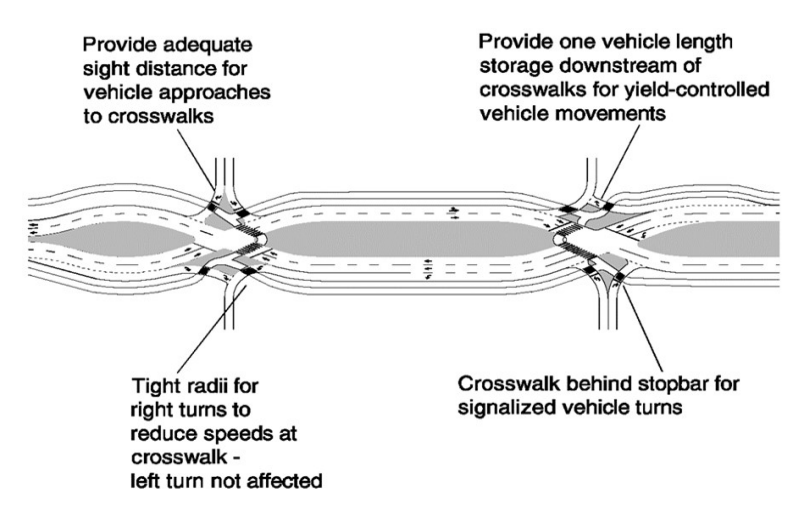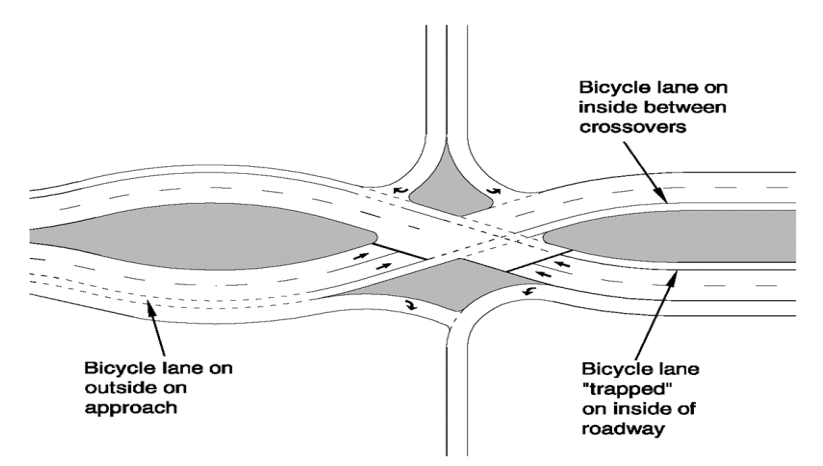14.10.7 Pedestrian and Bicyclist Considerations
DDIs have many benefits for pedestrians which include:
- Allowing more crossing time per phase due to the two-phase signal operations;
- Crossing only one direction of traffic resulting in reduced conflicts; and
- Fewer travel lanes for a pedestrian to cross.
DDIs provide the option to direct pedestrians to either the outside of the intersection or to a center walkway. The wide area between opposing traffic allows the opportunity for a large sidewalk down the center that can be bordered by concrete barrier for additional protection and channelization for pedestrians. Pedestrian facilities on the inside minimize conflicts with traffic turning left to and from the freeway and allow the crossing of the interchange in all directions. When placing the pedestrian sidewalk along the outside, important considerations are: the location of the crosswalk with respect to the bridge structure or other sight obstructions to maintain good visibility for both the pedestrians and vehicles and designing the turning radii to reduce speeds in the vicinity of pedestrians.
and
depict the inside and outside pedestrian sidewalk options, respectively.

Figure 14-50: Pedestrian-focused DDI – Center Walkway
Source: FHWA DDI Informational Guide

Figure 14-51: Pedestrian-focused DDI – Outside Walkway
Source: FHWA DDI Informational Guide
For bicyclists, the design should focus on minimizing bicycle conflicts with motor vehicles, providing adequate lateral space between vehicles and bicycles, minimizing speed differential between bicycle and vehicles, and managing bicycle-pedestrian conflicts. The 2 primary options for bicyclists on a cross street through a DDI are:
- A marked bicycle lane through the DDI -If a separate bicycle lane is provided, the preference is to locate it to the right of the vehicular traffic. Bicycle lane widths of 5-ft to 7-ft are recommended through the DDI. See ; and
- A separated sidewalk or wider shared-use path -This would typically entail the bicyclist proceeding through the DDI in the same area designated for pedestrians.
Ultimately, a thorough site assessment, an assessment of anticipated bicycle and pedestrian volumes, and an assessment of projected origins and destinations for pedestrians and bicyclists should be conducted to determine the preferred method of movement through the DDI.

Figure 14-52: Schematic for bicycle lane placement on right side of vehicular traffic
Source: FHWA DDI Informational Guide